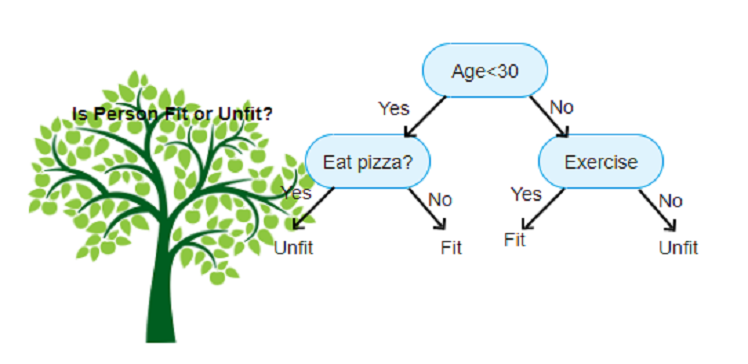- 31 Airport Road, by Old Airport, Delta, Nigeria
- [email protected]
Mastering the SOLID Principles in Software Development - JAVASCRIPT

Mastering the SOLID Principles in Software Development - JAVASCRIPT
Description:
The SOLID principles are foundational guidelines in object-oriented programming (OOP) that help developers create scalable, maintainable, and readable code. Each principle focuses on a specific aspect of software design to prevent issues such as code duplication, tight coupling, and poor adaptability. This article explores each SOLID principle in-depth with practical JavaScript examples for a robust software architecture.
Introduction
As applications grow in complexity, keeping code clean and manageable becomes challenging. The SOLID principles—defined by Robert C. Martin are five object-oriented design principles that address common software design challenges. Adhering to these principles makes code more flexible, easier to refactor, and less error-prone. This article breaks down each SOLID principle with examples to demonstrate how they help create maintainable and adaptable software.
1. Single Responsibility Principle (SRP)
Refactoring to Follow SRP
The Single Responsibility Principle states that a class should have only one reason to change, meaning it should handle a single responsibility or functionality. SRP reduces complexity, improves readability, and makes classes easier to maintain.
Suppose we’re designing an online ordering system where we need to handle order creation, saving orders to a database, and notifying users of their order status.
// Violating SRP - multiple responsibilities are mixed in a single class class OrderService { createOrder(orderDetails) { // Logic to create an order console.log("Order created:", orderDetails); } saveToDatabase(order) { // Logic to save the order to a database console.log("Order saved to database:", order); } sendNotification(order) { // Logic to send a notification console.log("Notification sent for order:", order); } } // Usage const orderService = new OrderService(); orderService.createOrder({ item: "Laptop", quantity: 1 });
To follow SRP, let’s split the responsibilities into separate classes: Order, OrderRepository, and NotificationService.
class Order { constructor(orderDetails) { this.orderDetails = orderDetails; console.log("Order created:", this.orderDetails); } } class OrderRepository { save(order) { console.log("Order saved to database:", order.orderDetails); } } class NotificationService { notify(order) { console.log("Notification sent for order:", order.orderDetails); } } // Usage const order = new Order({ item: "Laptop", quantity: 1 }); const repository = new OrderRepository(); repository.save(order); const notifier = new NotificationService(); notifier.notify(order);
Now, each class has a single responsibility. Order only handles order creation, OrderRepository manages database interactions, and NotificationService deals with notifications. This structure is more maintainable and modular.
2. Open/Closed Principle (OCP)
Refactoring to Follow OCP
The Open/Closed Principle suggests that classes should be open for extension but closed for modification. We should be able to add new functionality by extending existing code rather than altering it.
Imagine a payment processing system that supports multiple payment methods (e.g., credit card, PayPal). Initially, the PaymentProcessor class might check for different payment types directly.
// Violating OCP - new payment methods require modifying PaymentProcessor class PaymentProcessor { processPayment(method, amount) { if (method === "creditCard") { console.log(`Processing credit card payment of ${amount}`); } else if (method === "paypal") { console.log(`Processing PayPal payment of ${amount}`); } else { throw new Error("Unsupported payment method"); } } } // Usage const processor = new PaymentProcessor(); processor.processPayment("creditCard", 100);
Using polymorphism, we can refactor PaymentProcessor to rely on a base class or interface, allowing each payment method to have its own class. Now we can add new payment types without modifying PaymentProcessor.
class PaymentProcessor { process(amount) { throw new Error("process() method must be implemented."); } } class CreditCardPayment extends PaymentProcessor { process(amount) { console.log(`Processing credit card payment of ${amount}`); } } class PayPalPayment extends PaymentProcessor { process(amount) { console.log(`Processing PayPal payment of ${amount}`); } } // New payment method added without modifying existing code class ApplePayPayment extends PaymentProcessor { process(amount) { console.log(`Processing Apple Pay payment of ${amount}`); } } // Usage function processUserPayment(paymentMethod, amount) { paymentMethod.process(amount); } const payment = new ApplePayPayment(); processUserPayment(payment, 100);
Here, we can easily add new payment methods by creating new classes without modifying the PaymentProcessor logic.
3. Liskov Substitution Principle (LSP)
Refactoring to Follow LSP
The Liskov Substitution Principle asserts that objects of a superclass should be replaceable with objects of a subclass without altering the desired functionality. Subclasses should only extend and not alter the behavior of their superclass.
Suppose we have a Vehicle class and a Car subclass. If we add a Bicycle subclass without an engine, this would violate LSP if our code expects all vehicles to have engines.
// Violating LSP - not all vehicles have an engine class Vehicle { startEngine() { console.log("Engine started"); } } class Car extends Vehicle { startEngine() { console.log("Car engine started"); } } class Bicycle extends Vehicle { // No engine } // Usage const vehicle = new Bicycle(); vehicle.startEngine(); // Error: Bicycle does not have an engine
To adhere to LSP, we can separate Vehicle into MotorVehicle and NonMotorVehicle subclasses. This allows Car to extend MotorVehicle and Bicycle to extend NonMotorVehicle.
class MotorVehicle { startEngine() { console.log("Engine started"); } } class Car extends MotorVehicle { startEngine() { console.log("Car engine started"); } } class Bicycle { pedal() { console.log("Pedaling the bicycle"); } } // Usage const motorVehicle = new Car(); motorVehicle.startEngine(); const bicycle = new Bicycle(); bicycle.pedal();
By defining different classes for motor vehicles and non-motor vehicles, we maintain functionality without assumptions that every Vehicle has an engine.
4. Interface Segregation Principle (ISP)
Refactoring to Follow ISP
The Interface Segregation Principle advises that clients should not be forced to implement interfaces they do not use. Instead of large, all-encompassing interfaces, we should have smaller, more specific ones.
Suppose we have a Printer interface with methods for printing, scanning, and faxing. A basic printer shouldn’t be required to implement scan and fax functions if it only prints.
// Violating ISP - SimplePrinter forced to implement unused methods class Printer { print() {} scan() {} fax() {} } class SimplePrinter extends Printer { print() { console.log("Printing document..."); } scan() {} // Unused fax() {} // Unused }
By splitting the interfaces, SimplePrinter only implements the Printable interface, while other classes can implement Scannable or Faxable as needed.
class Printable { print() { throw new Error("print() method must be implemented."); } } class Scannable { scan() { throw new Error("scan() method must be implemented."); } } class Faxable { fax() { throw new Error("fax() method must be implemented."); } } class SimplePrinter extends Printable { print() { console.log("Printing document..."); } } class AllInOnePrinter extends Printable { print() { console.log("Printing document..."); } scan() { console.log("Scanning document..."); } fax() { console.log("Faxing document..."); } }
Now, SimplePrinter only implements the Printable interface without being forced to implement unnecessary methods.
5. Dependency Inversion Principle (DIP)
Refactoring to Follow DIP
The Dependency Inversion Principle suggests that high-level modules should depend on abstractions, not on low-level modules. This principle makes code more flexible by allowing low-level dependencies to be substituted more easily.
Imagine an application that logs messages. We might start by directly creating a ConsoleLogger, but this tightly couples our application with console logging.
// Violating DIP - tightly coupling Application to ConsoleLogger class ConsoleLogger { log(message) { console.log("Console log:", message); } } class Application { constructor() { this.logger = new ConsoleLogger(); } run() { this.logger.log("Application started"); } } // Usage const app = new Application(); app.run();
By introducing an ILogger interface, we can make Application depend on an abstraction, allowing us to switch the logger implementation easily.
class ILogger { log(message) { throw new Error("log() method must be implemented."); } } class ConsoleLogger extends ILogger { log(message) { console.log("Console log:", message); } } class FileLogger extends ILogger { log(message) { console.log("File log:", message); } } class Application { constructor(logger) { this.logger = logger; } run() { this.logger.log("Application started"); } } // Usage const consoleLogger = new ConsoleLogger(); const app = new Application(consoleLogger); app.run(); const fileLogger = new FileLogger(); const appWithFileLogger = new Application(fileLogger); appWithFileLogger.run();
Now, Application depends on the ILogger interface, allowing us to pass in any compatible logger without modifying the application code.
Conclusion
The SOLID principles provide a blueprint for creating scalable, flexible, and maintainable software. By following these principles, developers can reduce bugs, enhance readability, and make future changes easier to implement. Applying SOLID principles not only helps individual developers improve their skills but also fosters a more robust, adaptable codebase that supports team growth and product evolution.




